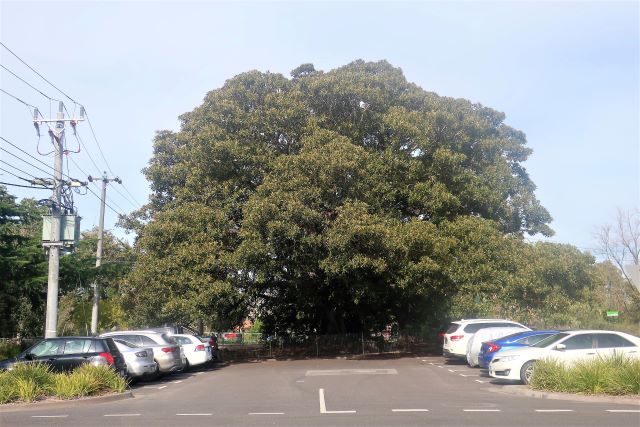
Favourite trees in Port
The ABC is inviting people to vote for their favourite native tree, an initiative for National Science Week. Through a process of elimination over several weeks, the favourite trees will be whittled down to arrive at THE favourite Australian tree. A full list of the short listed trees and a summary of their attributes can be found here.
Let’s bring this favourite tree discussion closer to home. What makes a tree a favourite: its form and functions, the bark or the flowers, the leaves or the associations?
Many of the nominated trees, while not from here, grow in Port. Trees attract our attention at different times of year, such as the Illawarra Flame tree which makes a festive statement at Gasworks in December. Bark shedding and renewal is an especially favourite time of year for me as ‘new trees step out of old’ as Les Murray wrote. As is the season when the lorikeets call from the nectar rich canopies of the yellow box.
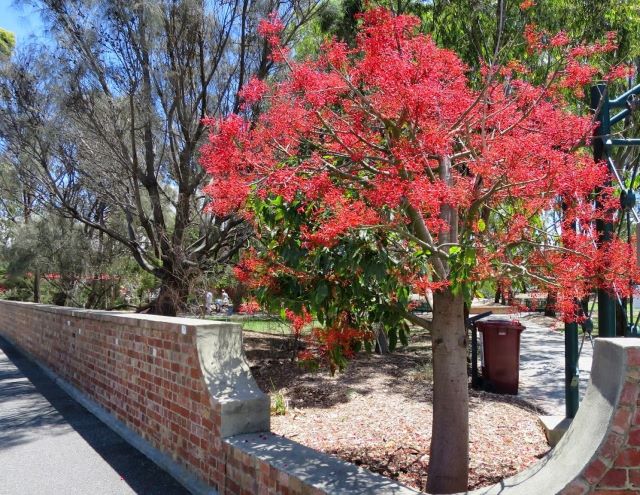
But to me, there is no tree more favourite than a tree that is growing in its place such as a Buloke in the Wimmera, a River Red Gum along the Murray, or a Mountain Ash in the forest.
This week as I walked around Port mildly bothered by the complexity of this simple idea of a favourite tree, I appreciated the many and various trees that make up Port Melbourne’s forest – their character, variety and contribution to the parks and streets of Port Melbourne.
In the end, since Port has few very old trees, I settled on the Moreton Bay figs Ficus macrophylla in Port Melbourne’s railway reserves as they are probably the oldest trees in Port. It’s not known exactly when they were planted but it is likely to have been in the late 19th century. The trees would have witnessed people passing by to leave the country for both world wars, and people being whisked away from Port’s piers to Bonegilla in the earliest days of post war migration. They have been an enduring feature of the changing life of Port Melbourne and continue to grow alongside life in Port.
After this winter’s rain, the trees look vigorous and the deep green leathery leaves are glossy.
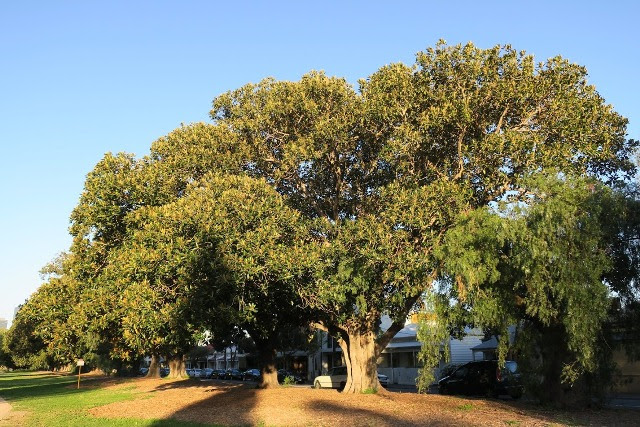
Moreton Bay figs have spreading shallow roots to capture any available nutrients.
I learned that Moreton Bay figs have an ‘obligate mutual relationship’ with fig wasps (Pleistodontes froggatti).
Female wasps enter the fig through a tiny opening at the end of the fig called an ostiole. The fig flowers, both male and female, are extremely small and are produced on the inside of the fruit. The wasps lay eggs in maturing female flowers. The eggs hatch, producing both male and female wasps, and these mate. By this time, the male flowers have begun to mature. The young female wasps collect the pollen from the male flowers. The young females then leave the fig, and fly off to find another fig where they can lay their eggs, and in the process, transfer pollen to another batch of young female flowers. 1
Mulch is thickly spread along the length of the Railway Reserves to ‘manage and maintain trees within the City of Port Phillip to ensure they survive for future generations’.
Increasing tree canopy cover is an imperative of the City of Port Phillip’s tree planting approach as the climate warms.
In 2017, there were 9,915 trees in Port Melbourne – 7,565 park trees and 2,350 street trees. The City aims to increase the canopy cover by 4% over 10 years.2
In managing and maintaining the urban forest, the City of Port Phillip also aims to ‘enhance wildlife habitat, strengthen wildlife corridors and increase biodiversity’.
To increase biodiversity, planting locally indigenous trees is a priority, according to naturalist Gio Fitzpatrick. That means planting more Black wattle Acacia mearnsii, Silver wattle Acacia dealbata, and She-oak Allocasuarina verticillata.
The mutuality between trees and the web of life they support is illustrated in this photograph of the caterpillar of the She-oak moth Pernattia pusilla.
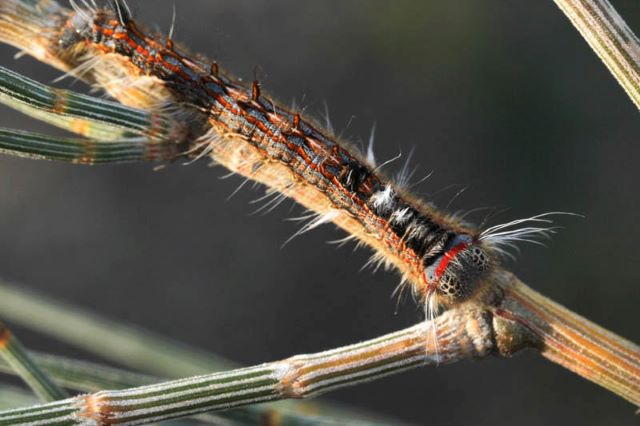
Do you have a particular favourite tree in Port, and what makes it a favourite for you?
What’s you favourite tree? Link to the ABC’s competition which is also an opportunity to learn more about Australia’s remarkable trees.
References
1 Alison Downing, Brian Atwell, Kevin Downing Moreton Bay fig Macquarie University Department of Biological Sciences
2 Greening Port Phillip street tree planting program 2017 – 2022

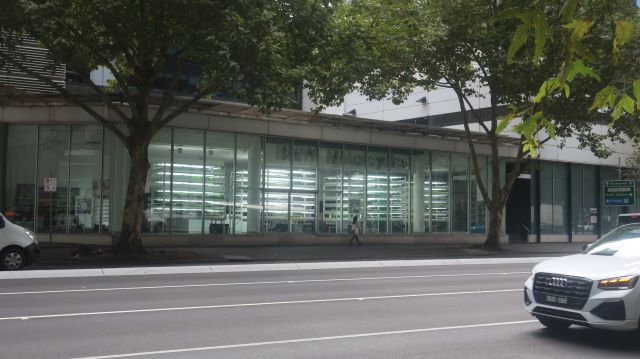
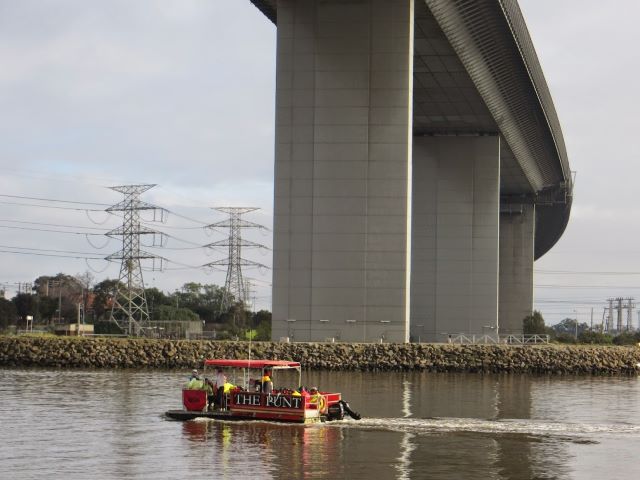
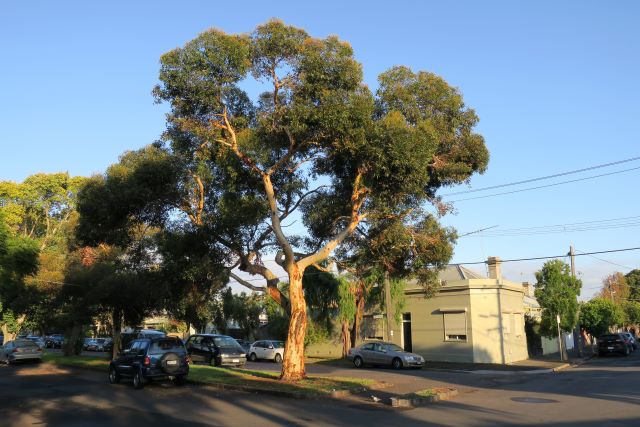
Leave a Reply